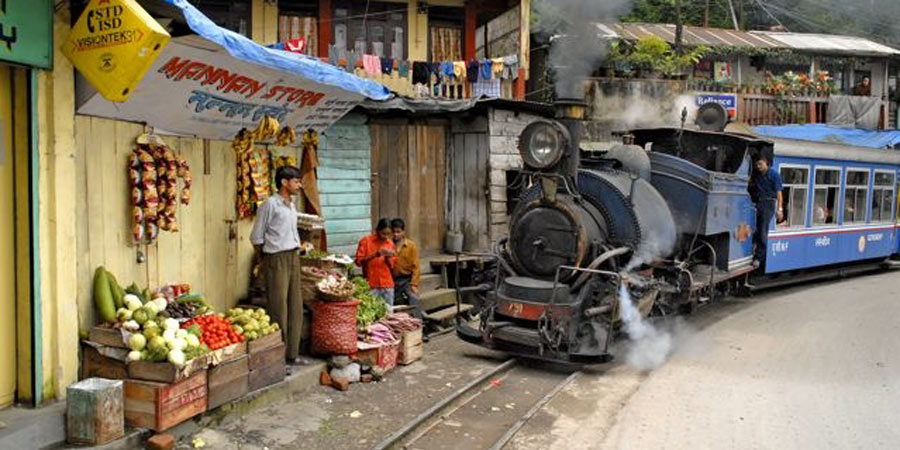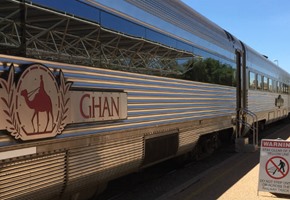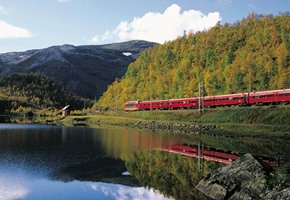The history of railway construction and development is fascinating, filled with engineering challenges and incredible strategies to overcome them. Whilst the very earliest examples of basic railways dates back to the 6th century BC, the construction of railways was not popularised until the 19th century, as in conjunction with the steam engine this ingenious method of transporting goods and people was recognised to be fast, efficient and safe.
Whilst the history of the railway has many fantastic facts to choose from, here are our Top 10 picks of historically interesting railways around the world.
One of the very earliest examples of a form of railway occurred in ancient Greece, where a 'rutway' was found to date back to circa 600 BC. Grooves were found to be etched into the stone to provide a track for carts to travel along on a path near Corinth, and there is evidence that both passengers and cargo were eligible to use the rutway for a fee. The rutway was in use until the middle of the 1st century AD, and ran between 4 and 5.3 miles.
The development of India's extensive railway system began in the 1850s, as the British East India Company built the very first railway in 1853, for the transportation of goods, and later, soldiers. Railways were quickly developed across the land, and by 1929, there were 41,000 miles of track in use throughout India.
Used to transport ores out of the mines in Germany, "hunds" were an early form of railcart often used in Saxony, and later found to be used in Wales. Originally using wooden rails before moving on to a more modern iron equivalent, hunds were hand-propelled, and are considered one of the earliest examples of using rails for the transportation of goods.
Building railways doesn't always run smoothly, as was unfortunately discovered by construction workers trying to build the Kenya-Uganda Railway at the end of the 19th century. This British railroad project was headed up by Lt. Col. John Henry Patterson, who commanded several thousand Indian workers to build the 660-mile route, later nicknamed 'The Lunatic Express', for the sheer expense and disastrous consequences that occurred during construction. One such incident occurred over a period of weeks in 1898, when a pair of maneless male lions hunted and ate Indian and African workers. Research estimates that 35 men died this way, though Lt. Col. Patterson, who killed the lions in question, put the figure at 135.
Taking 20,000 workers some 6 years to build, the Semmering Railway is an impressive track that ascends into the Austrian mountains at such a steep gradient, a brand-new engine was required to make the journey feasible. Trials were held to decide on the new locomotive, and though all four entrants met the requirements of the competition, none proved reliable. Fortunately, a functional engine was proposed by Wilhelm von Engerth, and the Semmering Railway was opened to great success in 1894.
A funicular railway was introduced to Mount Vesuvius at the end of the 19th century, with works completed on the line in 1880. Whilst the project took off with much success, allowing visitors to experience the volcano comfortably, the route suffered a few set-backs, most notably the eruption of Vesuvius in 1906. Then-owners Thomas Cook were forced to rebuild the line, which ran until air strikes once again destroyed it in 1943.
Built in 1804 by government order, the Swansea and Mumbles Railway - or 'Mumbles Train', as it became affectionately known - was originally designed to transport limestone, but very quickly became the very first fare-paying passenger train, with its maiden run on 25th March 1807. Originally pulled by horses, the line was gradually modernised, using steam power and eventually electrified trams, before closing in 1960.
The first steam train in the United States was built by Col. John Stevens III in 1825, and ran around his private estate in New Jersey. Stevens was also responsible for the first steam-powered ferry and the first commercial ferry service, as well as greatly influencing the US patent system.
Whilst there are 3 railways in Iceland, none of them are public - meaning Iceland is one of the few developed nations with no public railway system. Although a public system was proposed around 1900, the small size and population of Iceland, in addition to its harsh climate conditions, meant the idea was abandoned.
Whilst still relatively modern, the Shinkansen (or Japanese 'Bullet Trains') still have an important place in railroad history. The Tōkaidō Shinkansen was the first, built in 1964 to connect Tokyo with Osaka, and is the world's busiest high-speed line, carrying an estimated 150 million passengers a year, or 5 billion passengers to date.




